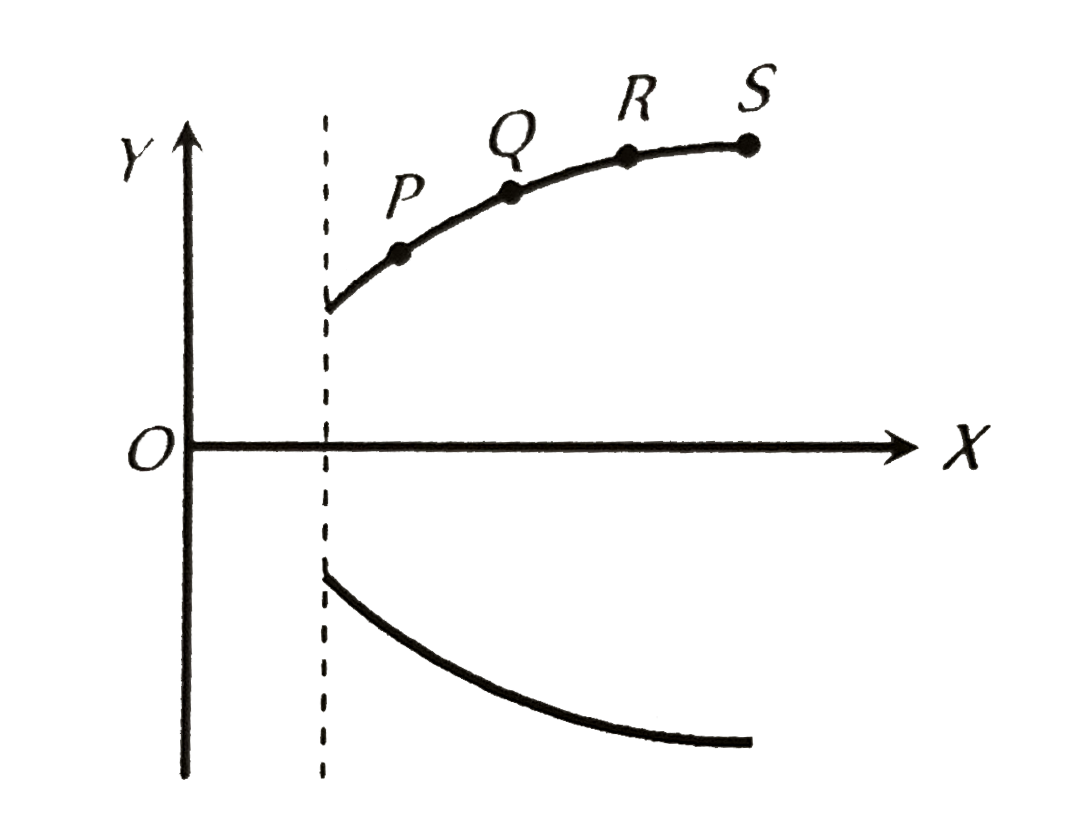Two identical photocathodes receive the light of frequencies f1 and f2 respectively. If the velocities of the photo-electrons coming out are v1 and v2 respectively, then
v21−v22=2hm[f1−f2]
v1+v2=[2hm(f1+f2)]12
v0−v2=[2hm(f1−f2)]12
v21+v22=2hm[f1+f2]
To solve the problem, we need to analyze the photoelectric effect for two identical photocathodes receiving light of different frequencies. Let's denote the frequencies of the light as f1 and f2, and the corresponding velocities of the emitted photoelectrons as v1 and v2.
1. Understanding the Photoelectric Effect:
The photoelectric effect states that when light of a certain frequency strikes a metal surface, it can eject electrons from that surface. The energy of the incoming photons is given by:
E=hf
where h is Planck's constant and f is the frequency of the light.
2. Energy of Photons:
For the first photocathode receiving light of frequency f1:
E1=hf1
For the second photocathode receiving light of frequency f2:
E2=hf2
3. Energy Conservation:
The energy of the incoming photon is used to overcome the work function ϕ of the metal and to provide kinetic energy to the emitted electron. Therefore, we can write:
E1=ϕ+KE1(for the first photocathode)
E2=ϕ+KE2(for the second photocathode)
4. Kinetic Energy Expression:
The kinetic energy of the emitted electrons can be expressed in terms of their velocities:
KE1=12mv21
KE2=12mv22
5. Substituting Kinetic Energy:
Substituting the expressions for kinetic energy into the energy equations gives us:
hf1=ϕ+12mv21
hf2=ϕ+12mv22
6. Rearranging the Equations:
Rearranging both equations to isolate the kinetic energy terms:
12mv21=hf1−ϕ(1)
12mv22=hf2−ϕ(2)
7. Subtracting the Two Equations:
Subtract equation (2) from equation (1):
12mv21−12mv22=(hf1−ϕ)−(hf2−ϕ)
Simplifying this gives:
12m(v21−v22)=hf1−hf2
8. Factoring Out Common Terms:
Factoring out h:
12m(v21−v22)=h(f1−f2)
9. Final Relation:
Rearranging gives us:
v21−v22=2hm(f1−f2)
Conclusion:
Thus, the final relation we derived is:
v21−v22=2hm(f1−f2)
The photoelectric effect states that when light of a certain frequency strikes a metal surface, it can eject electrons from that surface. The energy of the incoming photons is given by:
E=hf
where h is Planck's constant and f is the frequency of the light.
For the first photocathode receiving light of frequency f1:
E1=hf1
For the second photocathode receiving light of frequency f2:
E2=hf2
The energy of the incoming photon is used to overcome the work function ϕ of the metal and to provide kinetic energy to the emitted electron. Therefore, we can write:
E1=ϕ+KE1(for the first photocathode)
E2=ϕ+KE2(for the second photocathode)
The kinetic energy of the emitted electrons can be expressed in terms of their velocities:
KE1=12mv21
KE2=12mv22
Substituting the expressions for kinetic energy into the energy equations gives us:
hf1=ϕ+12mv21
hf2=ϕ+12mv22
Rearranging both equations to isolate the kinetic energy terms:
12mv21=hf1−ϕ(1)
12mv22=hf2−ϕ(2)
Subtract equation (2) from equation (1):
12mv21−12mv22=(hf1−ϕ)−(hf2−ϕ)
Simplifying this gives:
12m(v21−v22)=hf1−hf2
Factoring out h:
12m(v21−v22)=h(f1−f2)
Rearranging gives us:
v21−v22=2hm(f1−f2)
Thus, the final relation we derived is:
v21−v22=2hm(f1−f2)
Similar Questions
Two identical photocathode receive light of frequencies f1 and f2. If the maximum velocities of the photoelectrons (of mass m) coming out are respectively v1 and v2 then:
View SolutionTwo identical photo-cathodes receive light of frequencies v1 and v2. If the velocities of the photoelectrons (of mass m) coming out are v1 and v2 respectively, then
View Solution
Knowledge Check
Two identical photocathodes receive light of frequencies v1andv2. If the velocities of the photoelectrons (of mass m) coming out are respectively v1andv2. then
Av21+v22=2hm(v1−v2)Bv1+v2[=2hm(v1+v2)]1/2Cv21+v22=2hm(v1+v2)Dv1−v2[=2hm(v1+v2)]1/2Two identical photocathodes receive light of frequencies f1 and f2. If the velocities of the photo electrons (of mass m ) coming out are respectively v1 and v2 then
Af1−f2=m(v21−v22)2hBf1+f2=m(v21−v22)2hCf1−f2=m(v21+v22)2hDf1+f2=m(v21+v22)2hTwo identical photocathodes receive light of frequency f1andf2 if the velocites of the photo electrons (of mass m) coming out are repectively v1andv2 then
Av21−v22=2hm(f1−f2)Bv1+v2=[2hm(f1+f2)]1/2Cv21+v22=2hm(f1+f2)Dv1+v2=[2hm(f1−f2)]1/2
Two identical photo-cathodes receive light of frequencies v and v2. If the velocities of the photo electrons (of mass m ) coming out are respectively V1andV2 then
View SolutionTwo identical particles move towards each other with velocity 2v and v respectively. The velocity of centre of mass is
View SolutionTwo identical particles move towards each other with velocity 2v and v, respectively. The velocity of the centre of mass is:
View SolutionTwo identical particles move towards each other with velocity 2v and v respectively. The velocity of centre of mass is
View SolutionIn a parabola spectrograph, the velocities of four positive ions P,Q,R and S are v1,v2,v3 and v4 respectively

View Solution